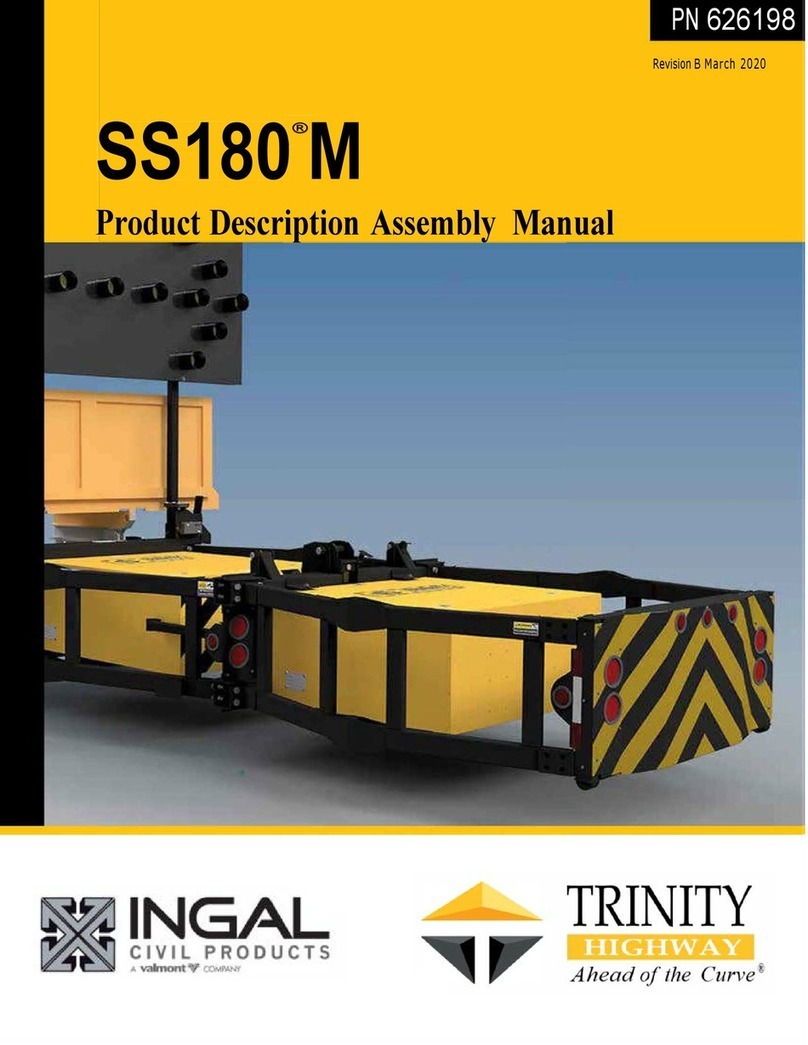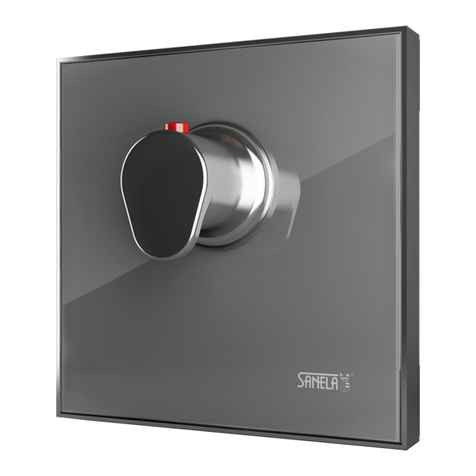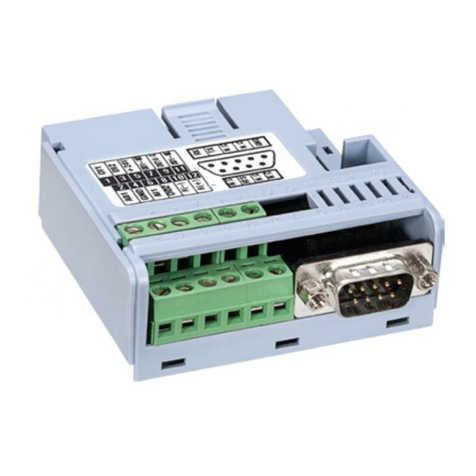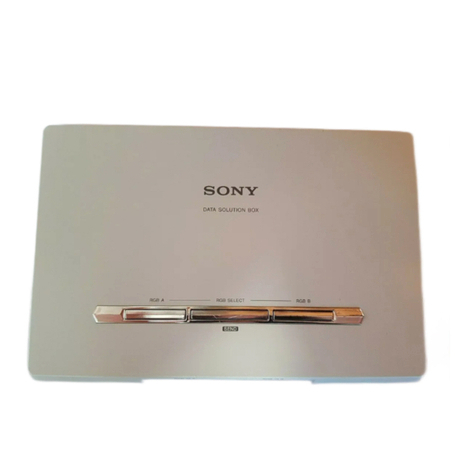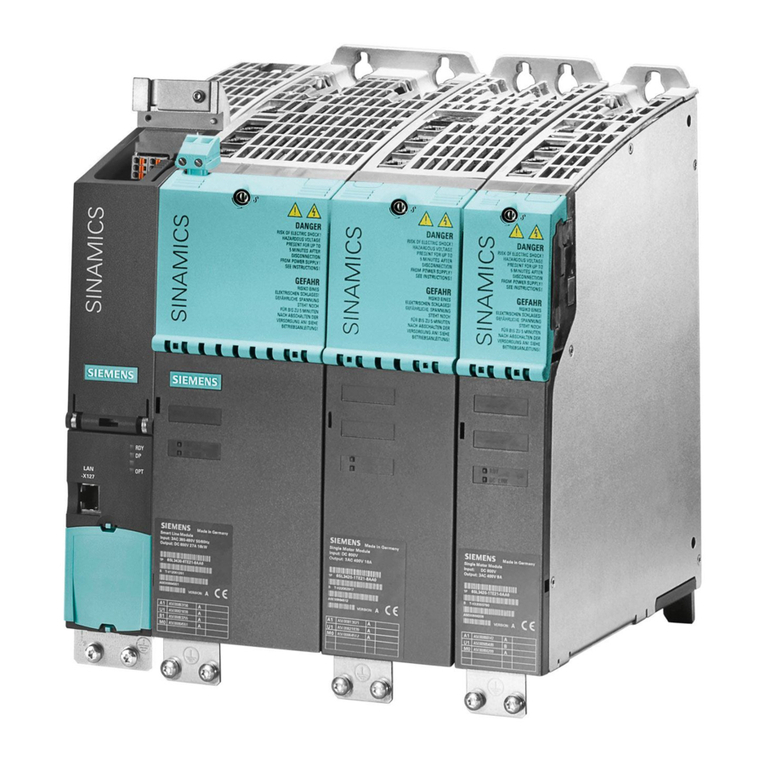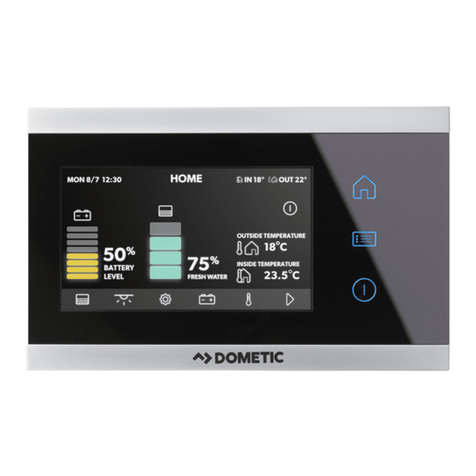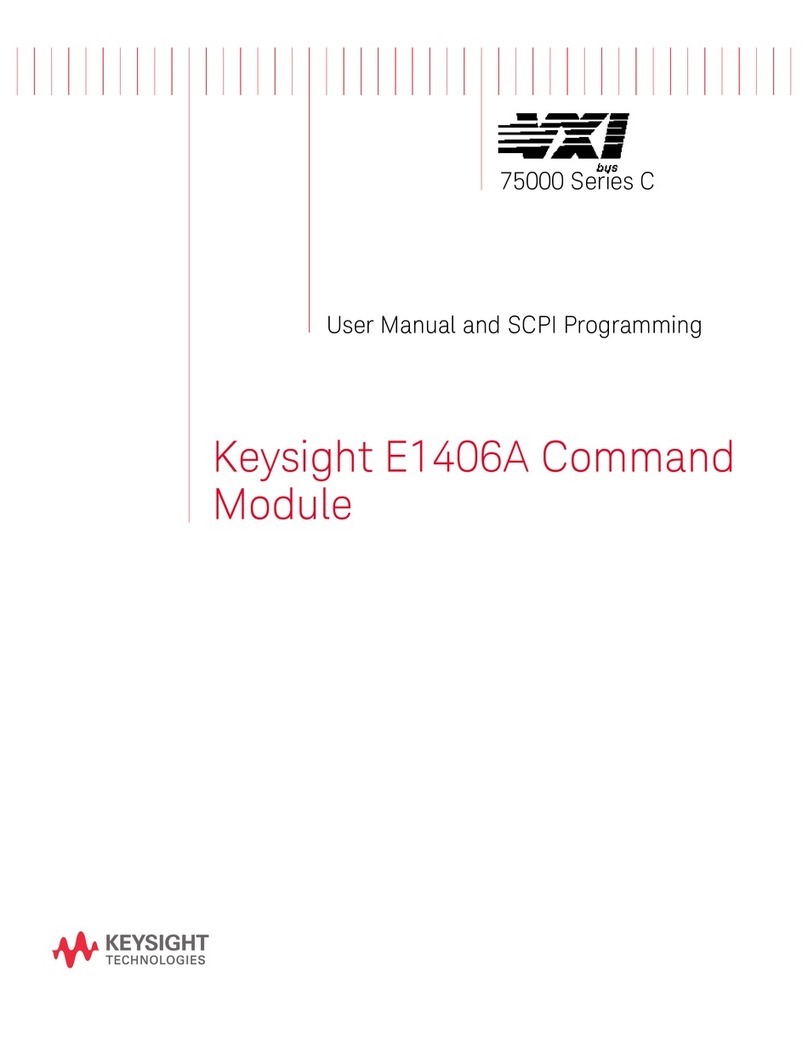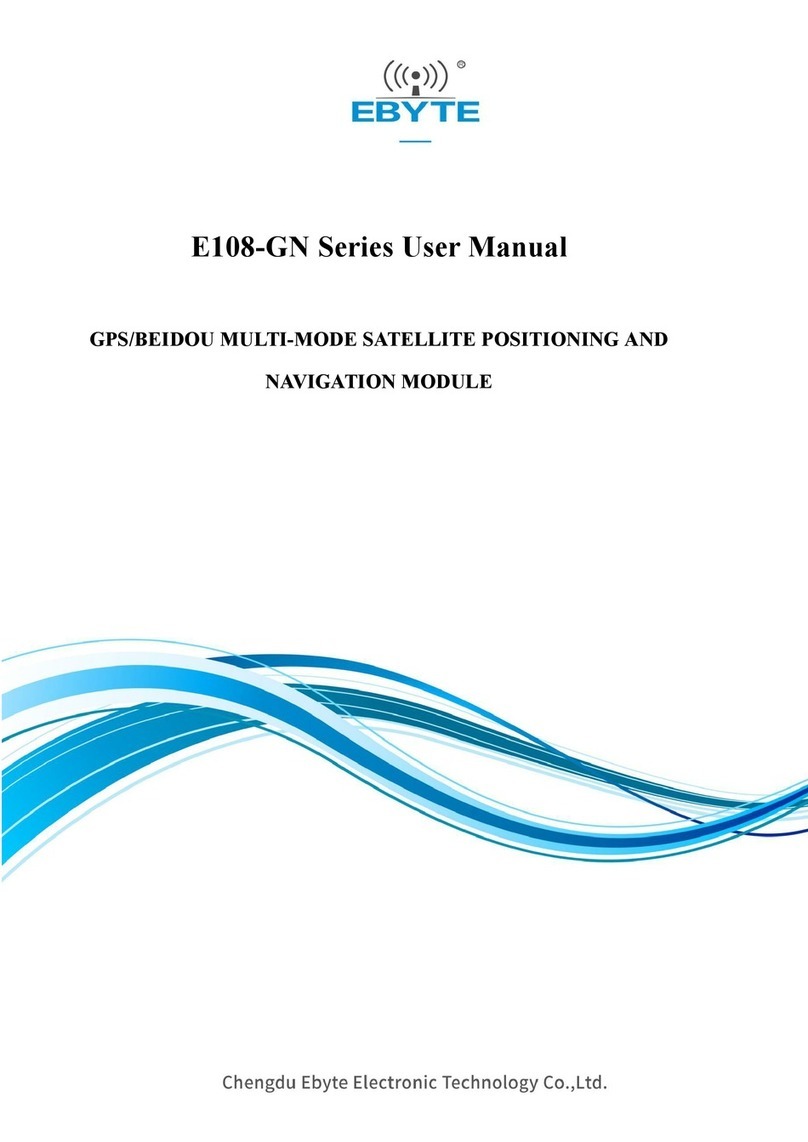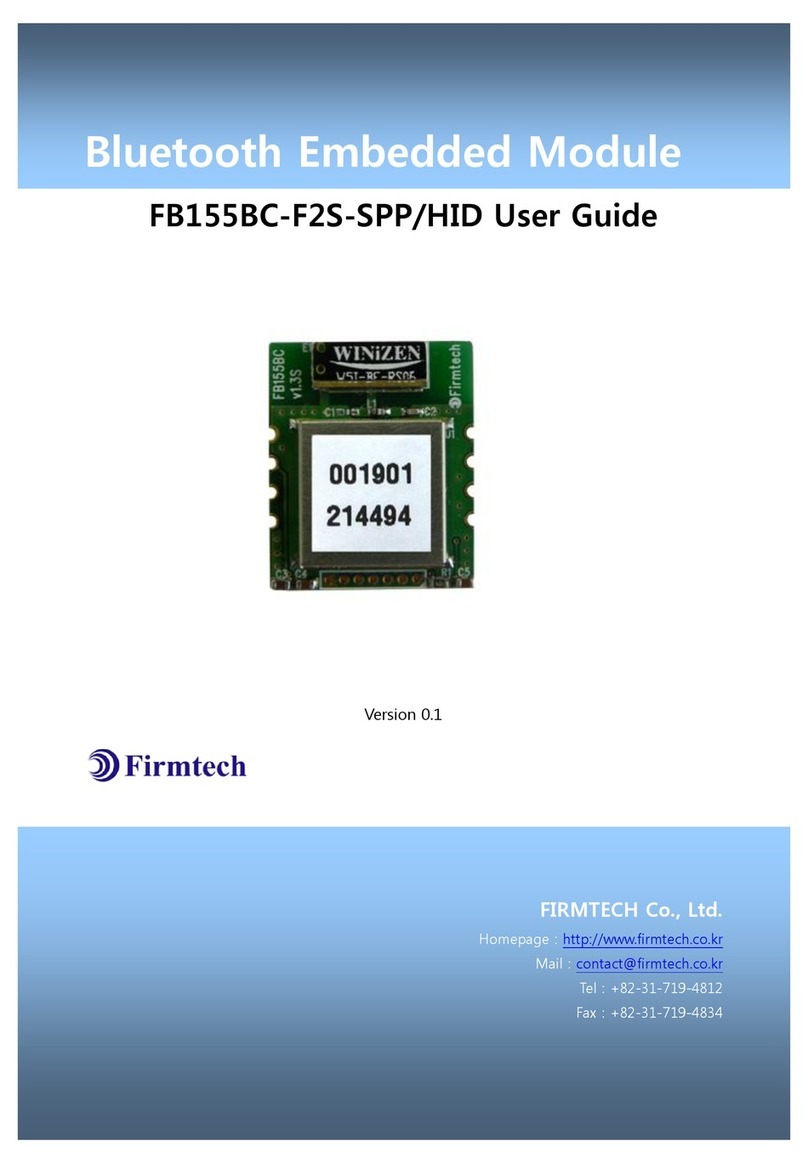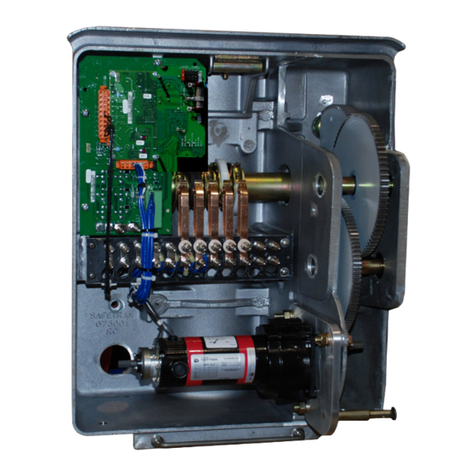Trinity Highway SST User manual


SST
®
is a registered trademark of Energy Absorption Systems, Inc. Part No. 115313
© 2019 Trinity Highway Products, LLC
TrinityHighway.com 1 Revision J January 2020
SST
®
Trailer
The SST
®
Trailer (“SST
®
”) has been tested pursuant to National Cooperative Highway Research
Program (“NCHRP”) Report 350 specifications. The SST
®
has been deemed eligible for federal-aid
reimbursement on the National Highway System by the Federal Highway Administration (“FHWA”).
Product Description
Assembly Manual
2525 N. Stemmons Freeway
Dallas, Texas 75207
Warning:
The local highway authority, distributors, owners, contractors,
lessors, and lessees are RESPONSIBLE for the assembly, maintenance, and
repair of the SST
®
. Failure to fulfill these RESPONSIBILITIES with respect to
the assembly, maintenance, and repair of the SST
®
could result in serious
injury or death.
Important:
These instructions are for standard assembly specified by the
appropriate highway authority. In the event the specified system assembly,
maintenance, or repair would require a deviation from standard assembly
parameters, contact a Trinity Highway representative.
This manual must be available to the worker overseeing and/or assembling the product at
all times. For additional copies, contact Trinity Highway at (888) 323-6374 or visit
TrinityHighway.com.
The instructions contained in this manual supersede all previous information and manuals. All
information, illustrations, and specifications in this manual are based on the latest SST
®
information available to Trinity Highway at the time of printing. We reserve the right to make
changes at any time. Please contact Trinity Highway to confirm that you are referring to the most
current instructions.

TrinityHighway.com 2 Revision J January 2020
Table of Contents
Customer Service Contacts .......................................................................................................... 3
Important Introductory Notes ........................................................................................................ 3
Safety Symbols ............................................................................................................................. 4
Safety Rules for Assembly............................................................................................................ 4
Limitations and Warnings.............................................................................................................. 5
Trailer Description......................................................................................................................... 6
Trailer Safety Instructions ........................................................................................................... 10
Electric Brakes Safety Instruction ............................................................................................... 11
Tires & Axle................................................................................................................................. 12
Controlling Skid Distance and Roll-Ahead .................................................................................. 13
Assembly .................................................................................................................................... 14
Preparation............................................................................................................................ 15
Welding Procedures.............................................................................................................. 15
Bolt-on Procedures ............................................................................................................... 16
Assembly Checklist (Complete and File) .................................................................................... 28
Trailer Operations ....................................................................................................................... 29
Attaching the TMA ...................................................................................................................... 31
Trip Preparation Checklist........................................................................................................... 32
Detaching TMA ........................................................................................................................... 32
Inspection Schedule.................................................................................................................... 33
Routine Maintenance .................................................................................................................. 34
Lubrication............................................................................................................................. 34
Brakes................................................................................................................................... 34
Electrical................................................................................................................................ 36
Tires & Wheels...................................................................................................................... 36
Wheel Attachment................................................................................................................. 36
Axle ....................................................................................................................................... 37
Storage.................................................................................................................................. 38
Technical Specifications ............................................................................................................. 39
Repair Instructions ...................................................................................................................... 40
Troubleshooting Guide................................................................................................................ 45
Electrical Problems ............................................................................................................... 49
Quick Reference Troubleshooting Guide.................................................................................... 50
TMA....................................................................................................................................... 53
Support Frame Assembly
...................................................................................................... 55
Hydraulic Assembly............................................................................................................... 57
Misc. Hardware ..................................................................................................................... 59
Lighting Assembly................................................................................................................. 62

TrinityHighway.com 3 Revision J January 2020
Customer Service Contacts
Trinity Highway is committed to the highest level of customer service. Feedback regarding the
SST
®
, its assembly procedures, supporting documentation, and performance is always welcome.
Additional information can be obtained from the contact information below:
Trinity Highway
Telephone (888) 323-6374 (USA)
+1 312 467 6750 (International)
E-mail TrinityHighway.com/Contact
Website TrinityHighway.com
Important Introductory Notes
Proper assembly, deployment, and future maintenance of the SST
®
is critical to achieve
performance of the system that has been evaluated and deemed eligible for reimbursement by
the FHWA per NCHRP Report 350. These instructions should be read in their entirety and
understood before assembling the SST
®
. These instructions are to be used only in conjunction
with the assembly of the SST
®
and are for standard assemblies only as specified by the applicable
highway authority. If you need additional information, or have questions about the SST
®
system,
please contact the highway authority that has planned and specified this assembly and, if needed,
contact Trinity Highway’s Customer Service Department. This product must be deployed in the
location specified by the appropriate highway authority. If there are deviations, alterations, or
departures from the assembly instructions specified in this manual, then the device may not
perform as tested.
Important:
DO NOT use any component part that has not been specifically
specified herein for this system during assembly or repair.
This product has been specified for use by the appropriate highway authority and has been
provided to that user who has unique knowledge of how this system is to be assembled. No
person should be permitted to assemble, maintain, or repair this system that does not possess
the unique knowledge described above. These instructions are intended for an individual qualified
to both read and accurately interpret them as written. These instructions are intended only for an
individual experienced and skilled in the assembly of highway products that are specified and
selected by the highway authority.
A manufacturer’s drawing package will be supplied by Trinity Highway upon request. Details
contained in the drawing package must be studied thoroughly by a qualified individual who is
skilled in interpreting them before the start of any product assembly.

TrinityHighway.com 4 Revision J January 2020
Safety Symbols
This section describes safety symbols that may appear in the
SST
®
manual. Read the manual for
complete safety, assembly, operating, maintenance, repair, and service information.
Symbol Meaning
Safety Alert Symbol:
Indicates Danger, Warning, Caution, or Important. Failure
to read and follow the Danger, Warning, Caution, or Important indicators could
result in serious injury or death to the workers and/or bystanders.
Warning:
Read safety instructions thoroughly and follow the suggested safe
practices before assembling, maintaining, or repairing the SST
®
. Failure to follow
this warning can result in serious injury or death in the event of a vehicle impact
with a system.
Important:
Please keep up-to-date instructions for later use and reference by
anyone involved in the assembly of the product.
Safety Rules for Assembly
* Important Safety Instructions *
This manual must be kept in a location where it is readily available to persons who are skilled and
experienced in the assembly, maintenance, or repair of the SST
®
. Additional copies of this manual
are immediately available from Trinity Highway by calling (888) 323-6374 or by email at
TrinityHighway.com/Contact. Please contact Trinity Highway if you have any questions
concerning the information in this manual or about the SST
®
.
Important:
It is the responsibility of the installer to use proper safety precautions
when operating power equipment and when moving heavy equipment or SST
®
components. Hand, eye, foot, and back protection shall be used.
Warning:
Safety measures incorporating appropriate traffic control devices
specified by the highway authority must be used to protect all personnel while the
TMA is in use. The traffic control plan established by the highway authority must
always be observed when deploying this product.

TrinityHighway.com 5 Revision J January 2020
Limitations and Warnings
Trinity Highway contracts with FHWA approved testing facilities to perform crash tests, evaluation
of tests, and submit of the results to the FHWA for review.
The SST
®
was tested to meet the impact criteria, requirements and guidelines of NCHRP Report
350. These tests are designed to evaluate product performance by simulating those impacts
outlined by involving a typical range of vehicles on roadways, from lightweight cars (approx. 1800
lb. [820kg]) to full size pickup trucks (approx. 4400 lb. [2000 kg]).. The SST
®
is certified to the
Test Level(s) shown below:
Test Level 3: 62 mph [100 kph]
These FHWA directed tests are not intended to represent the performance of systems
when impacted by every vehicle type or every impact condition existing on the roadway.
This system is tested to the test matrix criteria of NCHRP Report 350 as approved by
FHWA.
Trinity Highway expressly disclaims any warranty or liability for injury or damage to persons or
property resulting from any impact, collision or harmful contact with products, other vehicles, or
nearby
hazards or objects by any vehicle, object or person, whether or not the products were
assembled in consultation with Trinity Highway or by third parties.
The SST
®
is intended to be assembled, delineated, and maintained within specific state and
federal guidelines. It is important for the highway authority specifying the use of a highway product
to select the most appropriate product configuration for its site specifications. The customer
should be careful to properly select, assemble, and maintain the product. Site lay out, vehicle
population type; speed, traffic direction, and visibility are important elements that require
evaluation in the selection of a highway product.
After an impact occurs, the product must be repaired to its original condition as soon as possible.
When a safety product is impacted, it is mandatory that the highway authority inspect all the
components for damage and repair and/or replace components as necessary. If the system is not
repairable, a complete system replacement is required.
Warning:
Do not assemble, maintain, or repair the SST
®
until you have read this
manual thoroughly and completely understand it. Ensure that all Danger, Warning,
Caution, and Important statements within the manual are completely followed.
Please call Trinity Highway Customer Service if you do not understand these
instructions (p. 3).

TrinityHighway.com 6 Revision J January 2020
Trailer Description
The SST
®
has been shown to reduce the risk of injury to passengers of an errant vehicle and to
the driver of the truck to which the system is attached when it is impacted within the applicable
NCHRP Report 350 criteria. The system attaches to the rear of a truck and may be used in
stationary applications, such as a truck blocking a work zone or mobile operations, such as
striping, sweeping, plowing, etc.
The SST
®
consists of the following basic components: A collapsible frame assembly, two
crushable cartridges, an impact face, cylinder hitch assembly, intermediate frame suspension,
wheels and tires (Figures 1 and 2).
Definitions:
The BARRIER VEHICLE is the truck on which a TMA is mounted, while positioned upstream
(towards the direction that traffic is approaching) of a work zone.
The SHADOW VEHICLE is the truck on which a TMA is mounted, which is following behind a
moving operation such as striping, spraying, etc.
Figure 1
Figure 2
CARTRIDGE B CARTRIDGE A
IMPACT FACE
TRUCK
PINTLE HOOK
CYLINDER ASSEMBLY
SUSPENSION, AXLE, WHEELS

TrinityHighway.com 7 Revision J January 2020
Warning: Ensure that no one is near or behind the SST®when in operation.
Warning: Do not operate the SST®while wearing loose fitting clothing which may
become entangled during operation.
Warning: Deploy appropriate traffic-control devices while the SST®is in
operation.
1. It is the operator’s responsibility to ensure hydraulic cylinders are attached to the truck
hydraulic brackets and locked in place with the hairpin cotter pins when the SST®is in the
work zone or being used for protection (Figure 3)
.
*Trinity Highway recommends the use of a pintle hook with a rating of 20 tons (40,000 lbs.) or
greater.
Important: Check for signs of wear at the Pintle Hook and Receiver as part of
normal vehicle maintenance procedures.
REAR OF SUPPORT TRUCK
TRUCK MOUNTING PLATE
(ATTACHED DIRECTLY TO TRUCK FRAME RAILS)
HYDRAULIC CYLINDER
TRUCK PINTLE HOOK (*20 TON OR GREATER CAPACITY)
TRUCK CYLINDER MOUNT
(SUPPLIED WITH TRAILER)
Figure 3

TrinityHighway.com 8 Revision J January 2020
2. The TMA should be securely fastened to the truck. In the horizontal position on level
ground, the bottom of the TMA should be 12” ± 2” [305 mm ± 50 mm] from the ground and
level (Figure 4).
3. Make sure all twenty-four (24) pivot pins are in position and that all retaining pins are
assembled correctly (Figure 5).
4. The SST
®
is designed to absorb a crash and
to support its own weight if impacted within
the applicable NCHRP Report 350 criteria. Do
not drag the TMA or place anything on its top:
damage may result (Figures 6 and 7).
Caution:
Do not sit, stand or lean on any part of the TMA.
Figure 6
Figure 7
Figure 4
12” ± 2” [305mm ± 50 mm]
Figure 5
PIVOT PIN
RETAINING PIN

TrinityHighway.com 9 Revision J January 2020
5. Ballast and other heavy objects MUST BE ADEQUATELY ANCHORED to the truck to
prevent shifting during an impact. The force on the tie-down straps could be 20 times the
weight of the ballast (Figure 8).
6. The agency or highway authority responsible for the truck should inspect it for adequate
operator safety equipment (e.g., seat belts, head rests, etc.).
7. Make certain that the applicable highway authority’s current specifications as to TMA
reflectivity are evaluated and complied with. It is the operator’s responsibility to make sure
that all applicable reflectivity standards are met and the appropriate taping of indicators is
placed on the TMA before use on the highways.
8. Make sure that the performance and safety of the SST
®
is not impaired by damage or
corrosion.
Warning:
Failure to comply with these instructions can result in improper TMA
performance and possible personal injury. This TMA is intended to be used as an
impact attenuator on the rear of trucks which meet the minimum requirements for
this system (p. 13).
9. Regular maintenance of the SST
®
is important for safe use. Refer to the Routine
Maintenance section of this manual for additional information (p. 33).
a. Regular inspection of frame members, cartridges, and pins is necessary to ensure
proper system performance.
b. Regular inspection of hoses, cylinders, and tires is important. A broken or damaged
hose or cylinder will cause the system to function improperly. Low tire pressure could
cause a blowout.
c. Keep electrical connections clean to prevent arcing. Clean any hydraulic spills or
leakage to prevent bodily injury, fire, etc.
10. This system is a crash cushion and is therefore used in high traffic areas as directed by
the appropriate highway authority. Stay clear of traffic whenever possible. If an accident
is to occur, even during an NCHRP Report 350 criteria impact, there may be fragments
from the truck or impacting vehicle that could cause injury.
11. Do not use any part of the TMA for towing or hauling a load.
12. Ensure your truck is appropriate for attaching an SST
®
. See the Assembly section on page
14 for further details.
13. Mindfulness when moving hydraulic cylinders is encouraged so as not to pinch hands or
drop cylinders on your feet.
14. When cylinders are not in use, make sure they are stored on the cylinder storage pins with
the lynch pins fastened to keep the cylinders secure.
15. Periodically check the hydraulic fluid level.
Figure 8

TrinityHighway.com 10 Revision J January 2020
Trailer Safety Instructions
Caution: Noncompliance with these instructions can lead to damage of the SST®
components or render the SST®unfit for protection.
1. The Jack is used to support the TMA when it is detached from the truck. When the TMA
is attached to the truck, the Jack must be fully rotated 90 degrees to the travel position.
2. The driver should be extra cautious while backing the truck with the SST®so that injury
and/or damage will not result.
3. Periodically check and correct tire pressure to recommended pressure noted in this
manual. Never exceed the maximum pressure listed on the tire side wall.
4. Make sure the wheel lug nuts/bolts on the SST®are tightened to the correct torque as
recommended in the Maintenance section.
5. Be sure the pintle hook and pintle eye are connected and properly tightened and adjusted.
6. Make sure all lights are working correctly.
7. On a regular basis per maintenance schedule, verify that the breakaway brakes are
functioning properly.
8. Avoid sudden stops and starts that can cause loss of vehicle control.
9. Avoid sudden steering maneuvers that might create sway or undue side force on the
SST®.
10. Slow down when traveling over bumpy roads, railroad crossings and ditches.
11. Make wider turns at curves and corners.
12. When uncoupling the SST®, place blocks or wheel chocks at the front and rear of the trailer
tires to ensure that the trailer does not roll away when the coupling is released.
13. Lightly coat all electrical terminal connections periodically with non-conducting (dielectric),
light waterproof grease.
14. Periodically check axle bearings. Maintain per maintenance schedule (p. 33).
15. Always use safety chains when towing to prevent runaway trailer in case of system
detachment.
16. Cross safety chains under coupling to prevent tongue from dropping to ground in case of
connection failure.
17. Allow only enough slack for tight turns.
18. Do not let safety chains drag on the ground.
19. Twist safety chains equally from hook ends to take up slack.
20. The truck operator is completely responsible for monitoring the condition of the trailer
components as they relate to safe highway transit of their vehicle.

TrinityHighway.com 11 Revision J January 2020
21. Check that the wiring is properly connected and not touching the road, but loose enough
to make turns without disconnecting or damaging the wires.
Caution: Trailer towing can be hazardous.
22. Do not modify or change the trailer in any way.
23. Never weld, bolt or modify anything on the trailer. The added weight could affect impact
performance.
24. Use a correctly rated pintle hook (20 tons or greater).
Electric Brakes Safety Instruction
Caution: Noncompliance with these instructions can lead to damage of TMA
components or render the SST®unfit for protection.
1. In case of a connection failure, the SST®is equipped with a breakaway cable that activates
the electric brakes by pulling the breakaway pin mechanism.
2. It is the responsibility of the truck operator to set the attachment point of the breakaway
cable on the truck, so that the trailer brakes do not activate during normal towing.
3. If the truck operator connects the breakaway cable too tightly to the truck, the breakaway
mechanism will activate. The results of an improper connection can be catastrophic and
will result in damage to the trailer brakes and possibly the loss of tire and hub as bearings
are destroyed due to overheating.

TrinityHighway.com 12 Revision J January 2020
Tires & Axle
1. Periodically check and correct tire pressure. Inflate trailer tires to a minimum of 35 psi.
Never exceed the maximum pressure indicated on the tire side wall.
2. All trailer tires have a maximum speed rating of 65 mph [105 kph].
3. Three to five years is the projected life of a normal trailer tire.
4. The mileage expectation of a trailer tire is 5,000 - 12,000 miles [8,050 - 19,300 km].
Warning: Incorrect tire pressure can cause loss of control resulting in injury and
equipment damage.
5. Always replace trailer tires with (ST) Special Trailer tires.
6.
Wheels and tires offset is the distance from the mounting surface to the centerline of the
tire. The SST
®
axle bearing sets are designed for wheels with 0 to 1/2” [13 mm] offset.
Exceeding this offset will shorten bearing life and may lead to bearing failure.
7. Wheels and tires must be matched. The wheel will have a label stating its rim diameter,
width and contour. The tire selected must be approved by the Tire and Rim Association
for use on that particular size wheel.
8. When replacing tires, the tire capacity selected should not exceed the capacity rating of
the wheel.
9. When replacing tires, the tire inflation pressure must not exceed the pressure rating of the
wheel.
Warning: The use of tires that are not approved for use on a wheel could result
in explosive separation of the tire and wheel and could cause a serious accident.
10. Make sure the wheel lug nuts are tightened to the correct torque.
11. Do not jack up the trailer on the suspension components because of potential for damage.
Use the trailer frame when jacking up the trailer.
12. Never weld to the Torflex®axle. The Torflex®axle contains rubber cords to provide the
suspension system and can be damaged by heat generated from welding on the bracket
or tube.
13. Trailer wheels carry substantially more weight than truck wheels of the same size and
more disc flexing can occur due to side loading stresses. It is necessary to re-torque the
lug nuts several times until the wheels nut torque stabilizes.
Warning: Be careful to use only the recommended lug nut torque as specified
for that wheel and fastener. It is possible to permanently damage a wheel that has
been over torqued and may cause the loss of that wheel from the trailer.
Warning: Never use oil or grease on studs or nuts for wheels. Assembling wheels
without good metal to metal contact could cause loosening of the wheel nuts.

TrinityHighway.com 13 Revision J January 2020
Controlling Skid Distance and Roll-Ahead
The use of a SST®on the back of a truck will not:
Affect the skid (roll ahead) distance of an impacted truck. KEEP WORK CREWS CLEAR!
Controlling skid distance (roll ahead):
Skid distance is significantly increased and is less predictable for lightweight shadow vehicles.
Skid distance is reduced and is more consistent when heavier shadow vehicles are used.
Required truck weight: 9,920 lbs. [4,500 kg] or greater.
Roll-Ahead Distance for Shadow Vehicles
Weight of Shadow
Vehicle (Moving)
Prevailing Speed
mph [kph]
Weight of Impacting Vehicle to be Contained*
4,500 lbs
[2,040 kg]
10,000 lbs
[4,536 kg]
15,000 lbs
[6,804 kg]
24,000 lbs
[10,886 kg]
10,000 lbs
[4,536 kg]
60-65 [96-105] 100’ [30 m] 175’ [53 m] 225’ [69 m] 275’ [84 m]
50-55 [80-88] 100’ [30 m] 150’ [46 m] 175’ [53 m] 200’ [60 m]
45 [72] 75’ [23 m] 100’ [30 m] 125’ [38 m] 150’ [46 m]
15,000 lbs
[6,804 kg]
60-65 [96-105] 75’ [23 m] 150’ [46 m] 175’ [53 m] 225’ [69 m]
50-55 [80-88] 75’ [23 m] 125’ [38 m] 150’ [46 m] 175’ [53 m]
45 [72] 50’ [15 m] 100’ [30 m] 100’ [30 m] 100’ [30 m]
24,000 lbs
[10,886 kg]
60-65 [96-105] 75’ [23 m] 100’ [30 m] 150’ [46 m] 175’ [53 m]
50-55 [80-88] 50’ [15 m] 75’ [23 m] 100’ [30 m] 150’ [46 m]
45 [72] 50’ [15 m] 75’ [23 m] 75’ [23 m] 100’ [30 m]
Note: Distances are appropriate for shadow vehicle speeds up to 15 mph [25 kph].
Roll-Ahead Distance for Barrier Vehicles
Weight of Barrier
Vehicle (Stationary)
Prevailing
Speed mph
[kph]
Weight of Impacting Vehicle to be Contained*
4,500 lbs
[2,040 kg]
10,000 lbs
[4,536 kg]
15,000 lbs
[6,804 kg]
24,000 lbs
[10,886 kg]
10,000 lbs [4,536 kg]
60-65 [96-105] 50’ [15 m] 100’ [30 m] 150’ [46 m] 200’ [60 m]
50-55 [80-88] 25’ [8 m] 75’ [23 m] 100’ [30 m] 150’ [46 m]
45 [72] 25’ [8 m] 50’ [15 m] 75’ [23 m] 100’ [30 m]
15,000 lbs [6,804 kg]
60-65 [96-105] 25’ [8 m] 75’ [23 m] 100’ [30 m] 150’ [46 m]
50-55 [80-88] 25’ [8 m] 50’ [15 m] 75’ [23 m] 100’ [30 m]
45 [72] 25’ [8 m] 25’ [8 m] 50’ [15 m] 75’ [23 m]
24,000 lbs [10,886 kg]
60-65 [96-105] 25’ [8 m] 50’ [15 m] 75’ [23 m] 100’ [30 m]
50-55 [80-88] 25’ [8 m] 25’ [8 m] 50’ [15 m] 75’ [23 m]
45 [72] 25’ [8 m] 25’ [8 m] 25’ [8 m] 50’ [15 m]
Shadow or Barrier Vehicle Recommended Weight
Recommended minimum Barrier/Shadow vehicle weight: 9,920 lbs [4,500 kg].
*Weights of Typical Vehicles:
Midsize automobile - 2,250 lbs [1,020 kg]
Full-size automobile - 3,500 lbs [1,500 kg]
Loaded 3/4-ton pickup truck - 6,000 lbs [2,750 kg]
Loaded 1-ton cargo truck - 10,000 lbs [4,500 kg]
Loaded 4-yard dump truck - 24,000 lbs [11,000 kg]
Source: "Use of Truck Mounted Attenuators in Work Zones" by T. Darcy Sullivan, P.E and
Jack B. Humphreys, P.E., University of Tennessee.

TrinityHighway.com 14 Revision J January 2020
Assembly
Read and understand all instructions before beginning assembly.
Important: The truck weight shall be 9,920 lbs [4500 kg] minimum.
The system must be attached to the truck by pintle hook and cylinder attachment brackets.
The truck frame must be suitable and accessible for mounting a TMA system. If there are any
questions regarding the suitability, contact the Customer Service Department for assistance.
1) Shipping list
Check the shipping list against the actual parts received to make sure all items were received.
Review the drawing package and familiarize yourself with the assembly and part numbers.
2) Recommended tools:
Welding equipment (for 1/2” [13 mm] plate) GMAW or SMAW
Cutting torch
Hammer
Drift pin or Alignment pin (12” [305 mm] long)
Tape measure
1/2” drive socket wrench with 6” extension
1/2" drive sockets (9/16”, 3/4”, 7/8”, 1-1/8” deep well)
Open end wrenches (9/16”, 1-1/8”)
12” crescent wrenches – (2) (optional)
Marking implement (pencil, soap stone)
Floor jack
Drill motor for 13/16” diameter bit
13/16” diameter bit and pilot drill for same
Center punch
Torque wrench – 90 ft lbf [120 N-m]
Torque wrench – 25 ft-lbf [34 N-m]
Forklift
Hydraulic fluid (Dexron®III fluid only) *Shipped with system
Vise Grips
Allen Wrench 5/32”
Phillips Screw Driver #2
Wire Cutters
Note: The above list of tools is a general recommendation and should not be considered
an extensive list. Depending on specific conditions and the complexity of the assembly
specified by the appropriate highway authority the required tools may vary. Decisions as
to what tools are needed to perform the job are entirely within the discretion of the
specifying highway authority and the authority’s selected contractor performing the
assembly of the system.

TrinityHighway.com 15 Revision J January 2020
Preparation
3A)Assembly must be performed on a level surface
The TMA framework is very heavy and pivots in several areas. Until the framework is secured
with the cables, it can swing out in an approximate 7’ [2 m] radius from either side of the trailer
axle. A level surface is required to maintain control of the framework when it is being extended
to its full length.
3B)Truck ballast
Use a bubble level to verify that the truck is parked on a level surface. The truck should be as
close to the final driving weight as possible. If ballast is needed to meet 9970lbs [4500kg]
minimum, add it at this time. Ballast must be properly anchored to the truck to keep it in place
during an impact. Ideally, an adequately sized truck that requires no ballast should be used.
Because the tongue weight of the Trailer TMA is supported by the back of the vehicle, be sure
not to exceed the manufacturer's published maximum axle loads.
Important: It is the responsibility of the TMA operator to ensure the truck
manufacturer's center-of-gravity zone is known and applied when adding ballast.
4) Check for interference
Before attempting to assemble the cylinder brackets and pintle hook, check for interference
problems.
Temporarily position the cylinder brackets and pintle hook on the truck frame and check for
interference problems (p. 17). Interference problems with tail lights, springs, dump bodies (in
the up or down positions), etc., shall be corrected before proceeding.
Prepare the truck for the cylinder brackets and pintle hook. The truck frame shall be two C-
channels spread 34" ± 1" apart. Most trucks have a 1/2" plate welded across the back frame
members and a pintle hook. If not, start by making sure the frame is square by measuring
back from the spring shackles. Cut the frame square first if needed. Once the frame is
squared, the plate can be welded or bolted on.
Welding Procedures
a. Start by grinding the inside and outside of the frame ends to prepare for the weld
(Figure 9).
b. The plate needs to be a minimum of 1/2" thick and wider than 36" (Figure 10).
c. Grind the plate in the locations where the frame is to be welded.
d. Tack the plate into position and make sure that the rear plate is positioned correctly.
e. Continue welding the inside and outside frame to the plate.
Figure 10
Figure 9
TRUCK FRAME
GRIND THIS
EDGE
34” ±1”
CENTER PLATE ON TRUCK FRAME
TACK WELD
MIN. 1/2” THICK PLATE
GRIND PAINT OFF
BACK OF PLATE
4” MAX. OR
ADD GUSSET
FROM PLATE
TO THE FRAME.

TrinityHighway.com 16 Revision J January 2020
Bolt-on Procedures
a. Start by cutting two (2) 4" x 4" x 1/2" steel angle the height of the C channel.
b. Measure and mark the angle for four (4) 1-1/16” holes (Figure 11). The spacing needs to
be equal distances vertical and horizontal. Make sure the holes are spaced at least 2-
1/16” apart.
c. Drill holes in the angle.
d. Use the angle as a template for marking and drilling holes in the truck frame (Figure 12).
e. Bolt the angle in place using two (2) 1" diameter (grade 5) bolts on each side.
f. The plate needs to be a minimum of 1/2" thick and wider than 36" (Figure 13).
g. Drill matching holes in the plate.
h. Mount plate using four (4) 1" diameter (grade 5) bolts. If the plate is greater than 4” below
the C channel frame, you must gusset from the plate to the frame.
Figure 11
Figure 12
Figure 13
CENTERLINE OF
ANGLE FACE
2 1/16” MIN.
1 1/16” DIA. HOLE
(4 PLACES)
4” X 4” X 1/2”
ANGLE
1” HEX NUT
(4 PLACES)
1” GRADE 5 HEX
BOLT (4 PLACES)
1” HEX NUT (4 PLACES)
1” HEX NUT (4 PLACES)
CENTER PLATE ON
TRUCK FRAME
MIN. 1/2” THICK PLATE
4” MAX. OR ADD GUSSET
FROM PLATE TO FRAME
1” GRADE 5 HEX BOLT
(4 PLACES)

TrinityHighway.com 17 Revision J January 2020
5) Underride Assembly
With the truck at its actual driving weight and parked on a level surface, measure the distance
from the ground to the pintle hook. Attach the pintle eye to the trailer at the same height with
the trailer frame at 12" ± 2" [305 ± 50 mm] above the ground, front and rear.
Note: The truck’s springs may settle with the weight of the TMA. Adjust the height to compensate
for anticipated settling.
Position the Cylinder Brackets in line horizontally with the pintle hook ±5” [127mm] and in line
vertically with the truck frame rails as shown below. Weld two opposing sides of each bracket
or bolt the brackets to the truck.
Caution: The truck frame is high carbon steel. Do not weld or apply excessive
heat to bottom flange forward of rear-most leaf spring hangers to avoid cracking.
Prime and paint all welded areas.
6a) If TMA is fully assembled; attach the TMA to the truck. Go to Step 23.
6b) Uncrate the TMA
See Uncrating Instructions, Part No. 616787B.
7) Extend the Support Frame
Slowly and evenly pull the frame out to its full extent.
Warning: Use extreme care. The frame can be unwieldy even when supported
by a forklift.
Figure 14
Rear of Support Truck
Note: Pintle hook cylinder
mount to be aligned on same
centerline ± 5” [127 mm]
PINTLE HOOK (20 TON OR
GREATER CAPACITY)
CYLINDER MOUNT
[560 to 760 mm]
CYLINDER MOUNTS TO BE ALIGNED WITH TRUCK
FRAME RAILS ± 2” [50 mm] – APPROX. 32”
[813 mm] CENTER TO CENTER
22” to 30”

TrinityHighway.com 18 Revision J January 2020
Warning:
Until the cables are attached, the system may shift to one side
(Figure 15).
8) Attach Fenders
Attach Fenders as shown below. Do not tighten bolts yet. Attach nylon ties through hole in
bracket to secure light cable.
Figure 15
Figure 16
Fender Assembly
ALIGNMENT CABLES
ALIGNMENT CABLES
3/8” HEX NUT
3/8” LOCK WASHER
3/8” FLAT WASHER
3/8” X 1” G5 HEX BOLT
HOLE IN BRACKET
FENDER
NYLON TIES

TrinityHighway.com 19 Revision J January 2020
9) Mount Wheels
Attach
wheels as shown below using the torque sequence and stages for tightening.
10) Align Fenders
Align Fenders and tighten bolts
.
11) Assemble Fender Clearance Lights
Attach Fender Clearance Lights. Use nylon zip tie straps as shown in Figure 16 to keep the
wire away from the tire (Figure 18).
Lug nut torque requirements:
A. Start all nuts by hand to prevent
cross threading.
B. Torque nuts in stages as follows:
1st stage 20-25 lbf-ft
2nd stage 35-40 lbf-ft
3rd stage 70±5 lbf-ft
C. Follow torque sequence in Figure 17.
Figure 17
Figure 18
Fender Clearance Light Assembly
LUG NUT
WHEEL
WITH TIRE
REMOVE DUST CAP
BEARING PROTECTOR
BEARING PROTECTOR BRA
GROMMET, LIGHT
3 1/4X1 15/16, RECT
LIGHT, SEALED CLEARANCE,
2 1/2X1 1/4, A, 12V
FENDER
Table of contents
Other Trinity Highway Control Unit manuals
Popular Control Unit manuals by other brands

Lumel
Lumel MR03 Series user manual
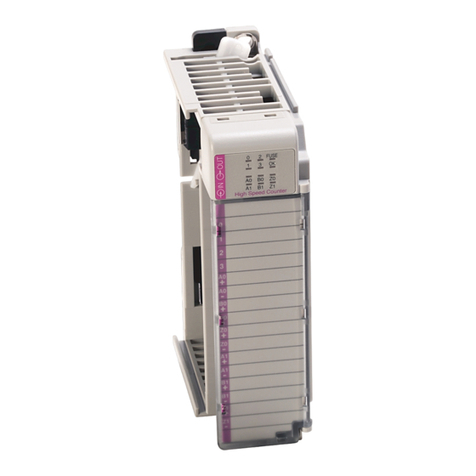
Rockwell Automation
Rockwell Automation Allen-Bradley 1769-BOOLEAN Reference manual

jbc
jbc UCR470-5A manual
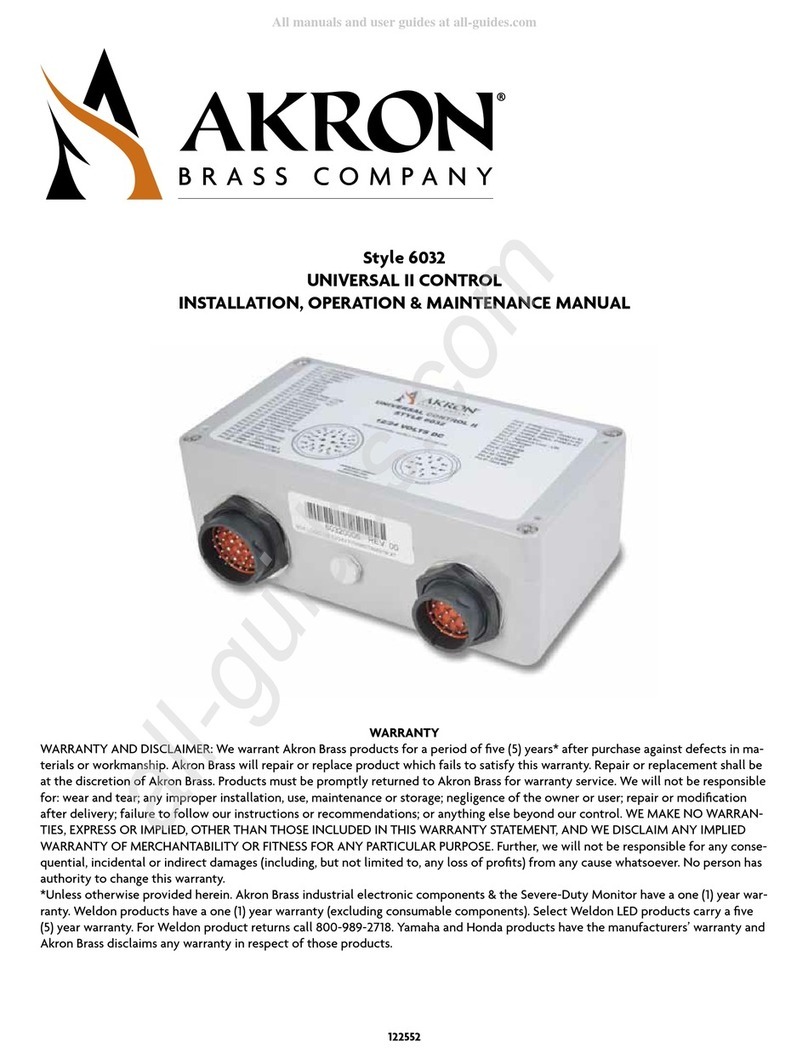
Akron
Akron Style 6032 Installation, operation & maintenance manual
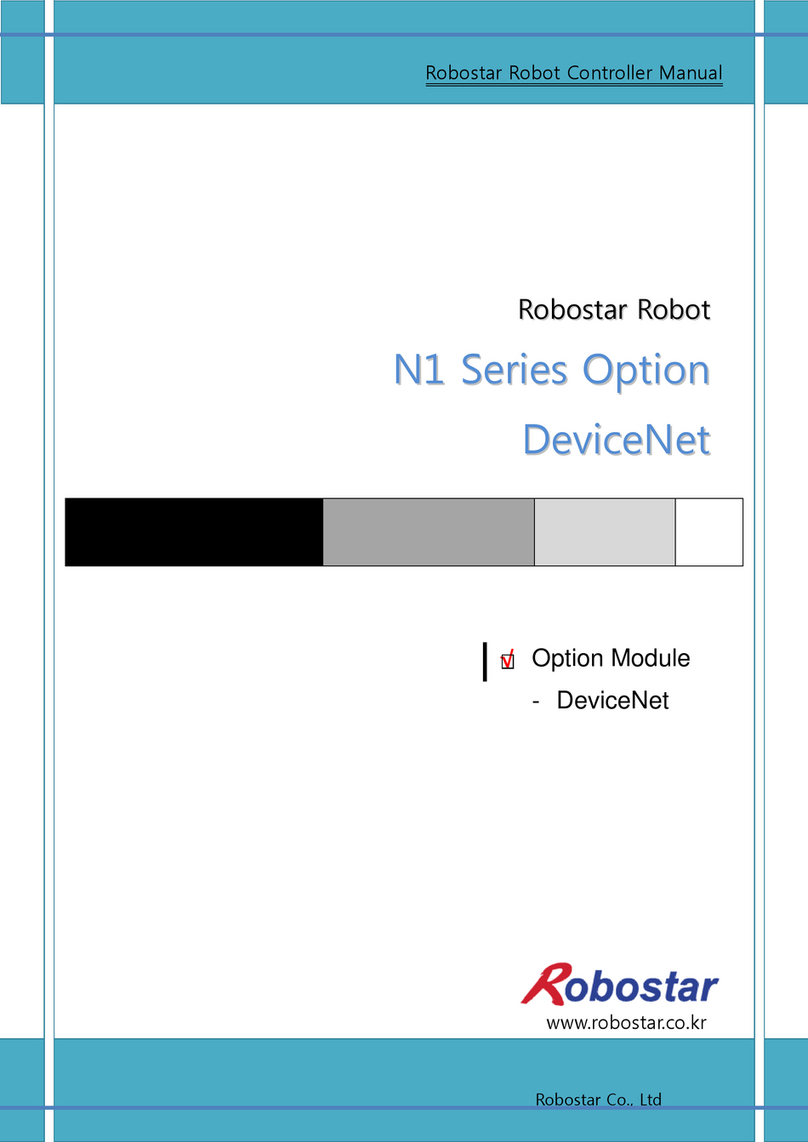
Robostar
Robostar N1 Series Option DeviceNet manual
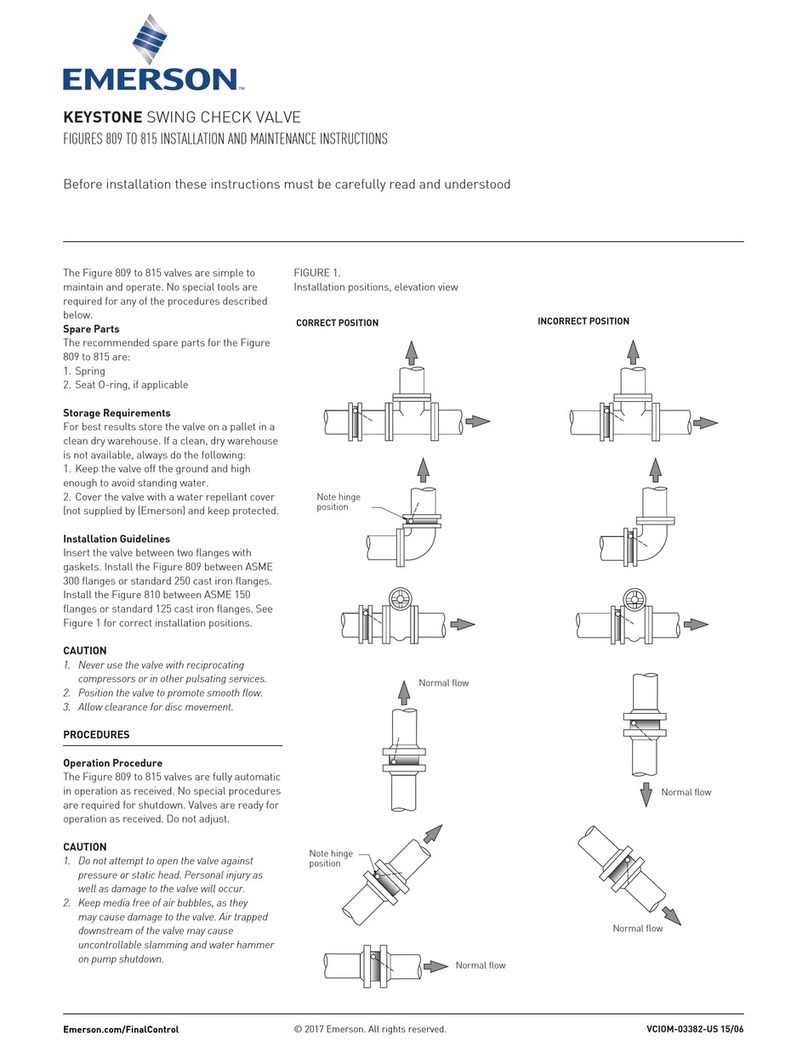
Emerson
Emerson Keystone Installation and maintenance instructions
